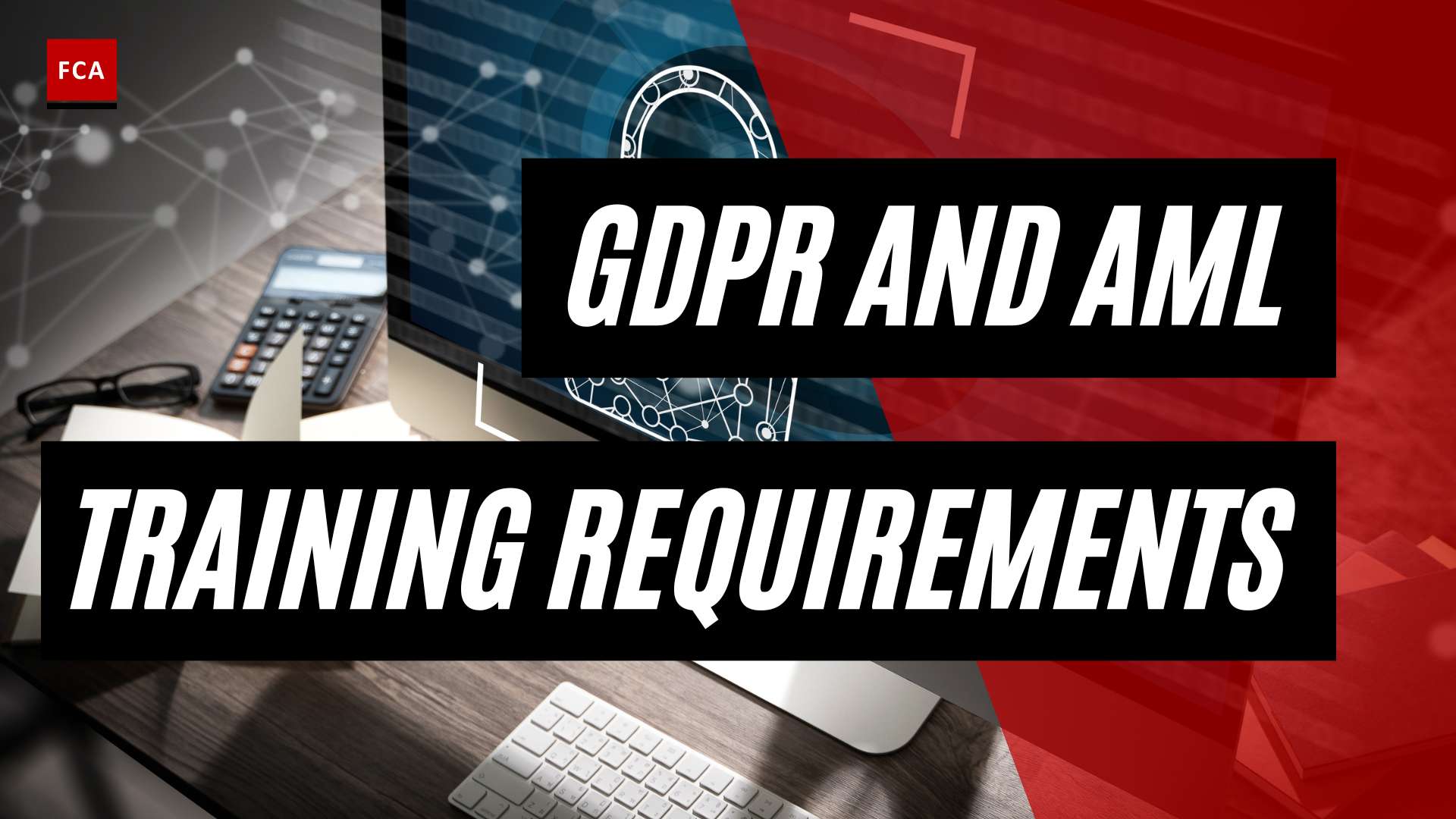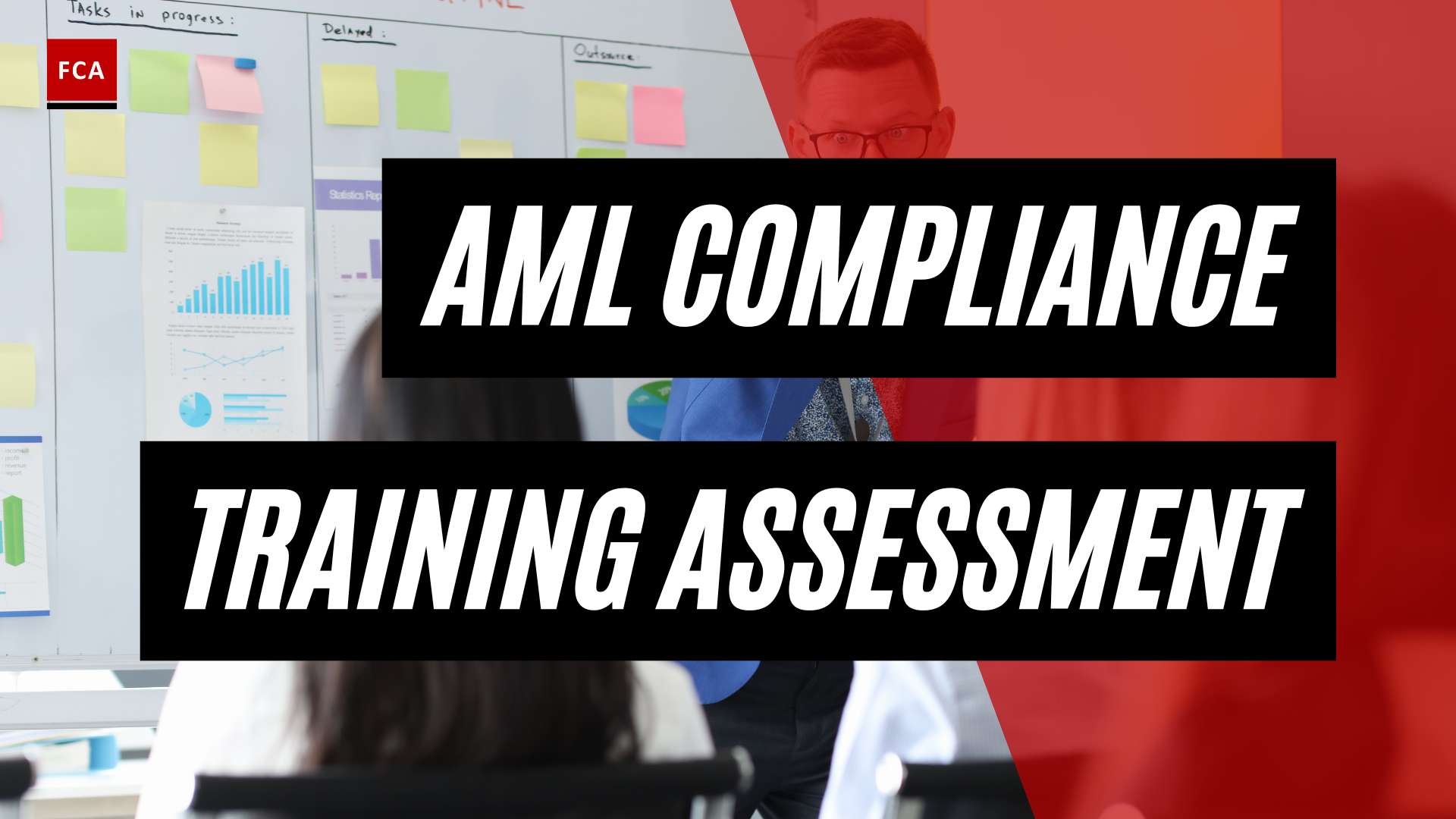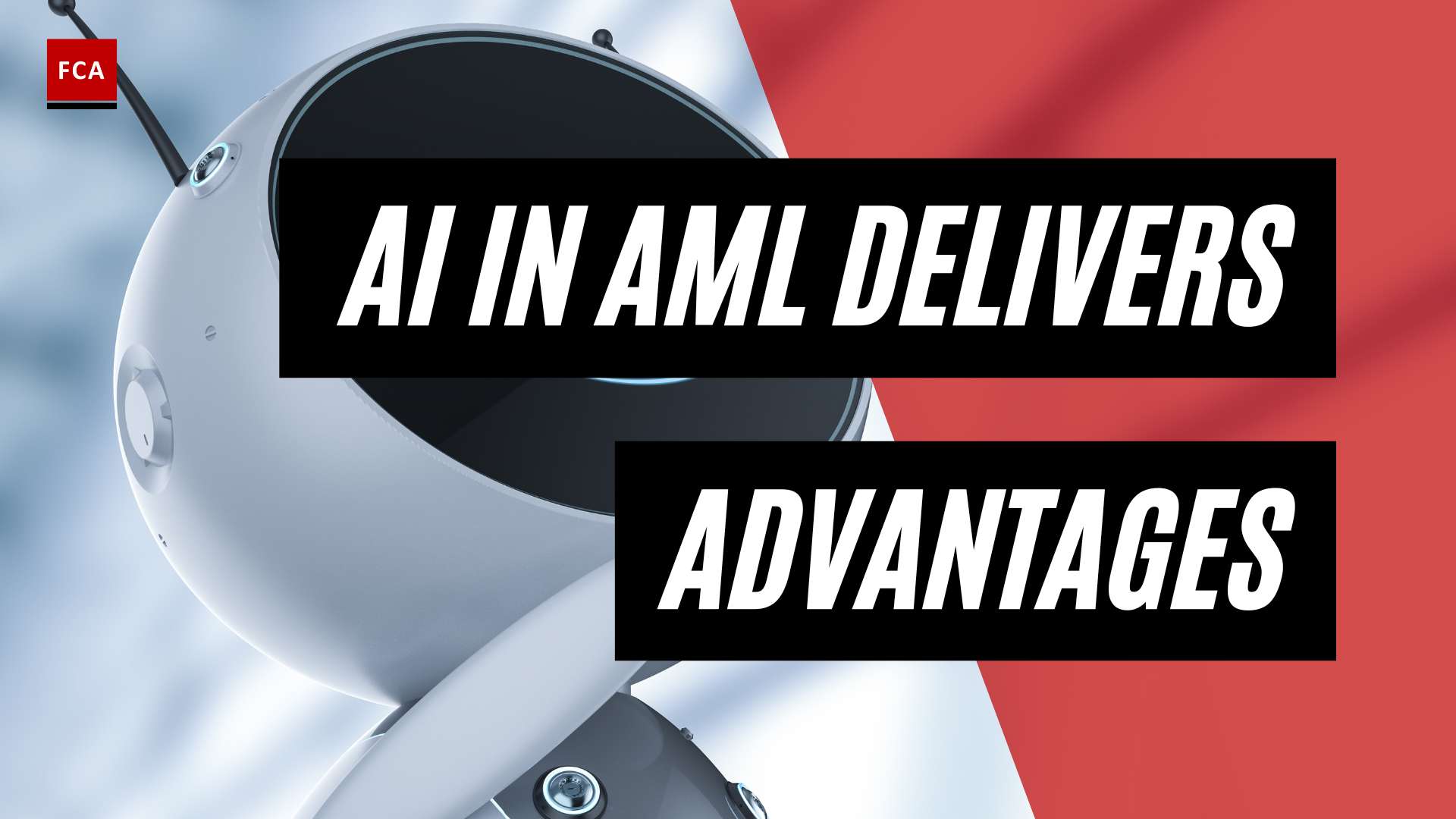AML Training Solutions: Enhancing Compliance Efforts
To combat the ever-increasing risks associated with money laundering and financial crimes, businesses need effective AML training solutions that enhance their compliance efforts. AML training plays a vital role in equipping professionals working in compliance, risk management, anti-money laundering, and anti-financial crime with the knowledge and skills necessary to identify and report suspicious transactions. This section explores the importance of AML training and its role in regulatory compliance.
Importance of AML Training
AML training is essential for businesses to prevent them from being used as conduits to funnel illicit funds derived from criminal activities such as drug trafficking, human trafficking, terrorism, and fraud (Shufti Pro). By providing employees with comprehensive training on AML regulations, indicators of money laundering, and reporting obligations, businesses can significantly mitigate the risks associated with financial crimes.
One of the primary objectives of AML training is to enable employees to detect and effectively respond to suspicious transactions. By understanding the red flags and warning signs associated with money laundering, employees can play a crucial role in safeguarding their organizations from potential legal repercussions and reputational damage. A well-trained workforce is better equipped to identify high-value transactions, unusual cash movements, complex fund transfers, and other indicators of money laundering (Shufti Pro).
AML Training for Regulatory Compliance
AML and Counter-Terrorism Financing (CTF) regulations make it necessary for businesses to report suspicious transactions to the appropriate authorities. AML training helps businesses understand these regulations better and equips them to report such transactions efficiently, protecting them from hefty fines and legal actions (Shufti Pro). By providing employees with in-depth knowledge of their reporting obligations and the necessary tools to fulfill those obligations, AML training ensures regulatory compliance.
Businesses that invest in AML training solutions demonstrate their commitment to risk management and compliance. Training programs help establish a culture of vigilance and ethics within organizations, making employees more aware of their role in combating financial crimes. AML training solutions also enable businesses to stay updated with evolving AML and CTF regulations, ensuring compliance with the latest requirements and guidelines (Shufti Pro).
In summary, the importance of AML training cannot be overstated. It provides professionals with the knowledge and skills necessary to detect, prevent, and report suspicious transactions. AML training solutions help businesses strengthen their compliance frameworks, improve risk management processes, and safeguard their reputation in the market. By leveraging comprehensive training programs, businesses can ensure the effectiveness of their AML compliance efforts while staying ahead of evolving financial crime threats.
Advantages of E-Learning for AML Training
In the realm of AML training solutions, e-learning has emerged as a powerful tool for enhancing the knowledge and skills of professionals working in compliance, risk management, anti-money laundering, and anti-financial crime. E-learning offers numerous benefits that contribute to the effectiveness and efficiency of AML training programs.
Benefits of Digital Learning
Digital learning, also known as e-learning, brings several advantages to the table when it comes to AML training. Here are some key benefits:
-
Cost-Effective: E-learning eliminates the need for physical classrooms, printed materials, and travel expenses associated with traditional training methods. This makes it a cost-effective option for businesses, especially those with a large workforce that requires regular AML training.
-
Scalability and Consistency: With e-learning, training materials can be accessed anytime, anywhere, allowing organizations to train employees across different locations and time zones. This ensures consistency in training content and delivery, avoiding discrepancies that may arise from in-person training sessions.
-
Self-Paced Learning: E-learning provides the flexibility for learners to progress at their own pace. This is particularly beneficial for individuals with varying levels of knowledge and experience, allowing them to focus on areas that require more attention while moving quickly through familiar content.
-
Engaging Multimedia: E-learning platforms often incorporate multimedia elements such as videos, interactive quizzes, and simulations to engage learners and enhance their understanding of complex AML concepts. These visual and interactive elements make the learning experience more enjoyable and effective.
-
Tracking and Reporting: E-learning platforms typically offer robust tracking and reporting functionalities. This allows organizations to monitor the progress and performance of learners, ensuring compliance with training requirements and identifying areas that may require additional support.
Flexibility and Accessibility of E-Learning
One of the significant advantages of e-learning for AML training is its flexibility and accessibility. Learners can access training materials from their preferred device—be it a computer, tablet, or smartphone—and learn at a time and place that suits them best. This flexibility accommodates the busy schedules of professionals, enabling them to fit training into their workflow without disrupting their daily responsibilities.
Furthermore, e-learning provides an opportunity for individuals to revisit training materials as needed. Learners can access the content multiple times, reinforcing their understanding of AML concepts and allowing for continuous learning and improvement.
By leveraging e-learning for AML training, organizations can ensure that their employees receive comprehensive, consistent, and convenient education on the indicators of money laundering, fraud detection, and financial crime prevention. This empowers professionals to effectively contribute to the compliance efforts of their organizations, safeguarding their reputation and credibility in the market while avoiding potential legal repercussions.
In the next section, we will explore the key features of AML training solutions, including comprehensive course content, interactive learning modules, and real-world case studies, that further enhance the effectiveness of e-learning in the context of AML training.
Key Features of AML Training Solutions
To effectively combat money laundering and financial crimes, AML training solutions offer key features that enhance the learning experience and equip professionals with the necessary skills and knowledge. Let’s explore the key features of these training solutions: comprehensive course content, interactive learning modules, and real-world case studies.
Comprehensive Course Content
AML training solutions provide comprehensive course content that covers a wide range of topics related to anti-money laundering and financial crime detection. These courses aim to educate professionals on the indicators of money laundering, such as high-value transactions, unusual cash movements, and complex fund transfers (Shufti Pro). The content is designed to enhance their capabilities in detecting and mitigating fraud effectively.
The course content typically includes detailed information about regulatory frameworks, international standards, and best practices in AML compliance. It may also cover topics like customer due diligence, know your customer (KYC) procedures, transaction monitoring, and reporting suspicious activities. By providing a comprehensive understanding of AML-related concepts, professionals can develop a strong foundation in compliance and risk management.
Interactive Learning Modules
AML training solutions incorporate interactive learning modules to engage learners and facilitate effective knowledge retention. These modules employ various instructional techniques, such as quizzes, simulations, and interactive scenarios, to create an immersive learning experience. By actively participating in the learning process, professionals can apply their knowledge to real-life situations and develop practical skills.
Visual methods, including videos and graphical representations, are often utilized to enhance engagement and cater to different learning preferences (LinkedIn). These interactive elements make the learning experience more dynamic and enable professionals to grasp complex concepts more easily.
Real-World Case Studies
Real-world case studies are a valuable component of AML training solutions. These case studies provide professionals with practical examples of money laundering schemes and financial crimes, allowing them to apply their knowledge in a realistic context. By analyzing and solving these cases, professionals can develop critical thinking skills and learn how to identify suspicious activities effectively.
Real-world case studies also help professionals understand the importance of AML compliance in businesses and the potential consequences of non-compliance. They provide insights into the challenges faced by financial institutions and other organizations when dealing with money laundering risks.
By incorporating comprehensive course content, interactive learning modules, and real-world case studies, AML training solutions offer a holistic approach to educating professionals in compliance, risk management, anti-money laundering, and anti-financial crime. These key features equip individuals with the necessary skills and knowledge to detect and mitigate financial crimes effectively and safeguard businesses from reputational and legal risks.
Effective Tools for AML Training
To enhance AML training efforts, organizations can leverage various tools and technologies that streamline the learning process and promote effective compliance. Three key tools for AML training include AML software solutions, KYC process automation, and transaction monitoring systems.
AML Software Solutions
AML software solutions play a crucial role in strengthening compliance efforts. These solutions utilize advanced technologies to automate and streamline various AML processes, enabling organizations to verify customers, flag suspicious transactions, screen sanctions and PEP lists, and mitigate false positives more efficiently than manual processes (Unit21).
Prominent AML software providers include:
| Provider | Description |
|---|---|
| Vespia | Vespia is an AI-powered KYB/AML platform that offers streamlined business verification, AML compliance, and risk management processes using AI. It serves as a trusted partner for many top-tier financial institutions. |
| MemberCheck/NameScan | MemberCheck/NameScan is an AML screening solution originating from Australia. It offers API integration with various platforms, providing a user-friendly dashboard for efficient screening. They offer pricing options such as pay-as-you-go and subscription plans. |
| ComplyAdvantage | ComplyAdvantage is a London-based company that provides real-time global databases for AML screening. They offer integrations with multiple business platforms and pricing options tailored to the size and needs of the business. |
| LexisNexis | LexisNexis, a global company specializing in legal and professional solutions, offers AML software as part of its compliance management tools. They provide API integration and offer modular pricing based on the required features. |
Source: Vespia
KYC Process Automation
Know Your Customer (KYC) is a critical component of AML compliance. KYC process automation tools help organizations efficiently collect, verify, and maintain customer data, ensuring compliance with regulatory requirements. These tools enable the automation of customer due diligence, identity verification, and risk assessment processes, reducing manual effort and improving accuracy.
KYC process automation tools enhance efficiency by integrating with various data sources, conducting real-time checks, and utilizing advanced algorithms to identify potential risks. By automating these processes, organizations can streamline AML training and ensure compliance with regulatory guidelines.
Transaction Monitoring Systems
Transaction monitoring systems play a crucial role in detecting and preventing suspicious financial activities. These systems continuously analyze transactions, customer behavior, and other relevant data to identify patterns and anomalies that may indicate money laundering or other illicit activities.
Transaction monitoring systems utilize advanced algorithms and machine learning techniques to flag potentially suspicious transactions for further investigation. These systems help organizations comply with regulatory requirements by providing real-time alerts, generating reports, and facilitating the reporting of suspicious activities to regulatory authorities.
By leveraging these effective tools for AML training, organizations can enhance their compliance efforts, streamline AML processes, and mitigate the risks associated with money laundering and financial crimes. These tools not only improve the efficiency and accuracy of AML training but also contribute to a stronger compliance culture within the organization.
Prominent AML Training Solution Providers
When it comes to AML training solutions, there are several prominent providers in the market that offer innovative tools and platforms to enhance compliance efforts. Here are some notable AML training solution providers:
Vespia: AI-Powered KYB/AML Platform
Vespia is an all-in-one KYB/AML platform powered by AI, offering streamlined business verification, AML compliance, and risk management processes using AI. It is a trusted partner for many top-tier financial institutions. With Vespia, organizations can benefit from advanced AI algorithms and automation to improve efficiency and accuracy in their AML training and compliance procedures.
Learn more about Vespia and their AI-powered KYB/AML platform on their website.
MemberCheck/NameScan: AML Screening Solution
Originating from Australia, MemberCheck/NameScan has been a prominent AML screening solution since 2008. They offer API integration with various platforms and provide a user-friendly dashboard for efficient screening processes. MemberCheck/NameScan offers flexible pricing options, including pay-as-you-go and subscription plans starting from $90 for 50 scans. Their solution enables businesses to conduct comprehensive AML screening to meet regulatory requirements and mitigate risks.
To explore the AML screening solution offered by MemberCheck/NameScan, visit their website.
ComplyAdvantage: Real-Time Global Databases
ComplyAdvantage is a London-based AML screening company that provides real-time global databases for effective AML compliance. Their comprehensive databases allow businesses to perform in-depth screening of individuals and entities to identify potential risks and ensure compliance with regulatory requirements. ComplyAdvantage offers integrations with multiple business platforms and offers different pricing options based on the size and needs of the business, usually requiring an annual commitment.
Discover more about the real-time global databases offered by ComplyAdvantage on their website.
LexisNexis: AML Software and Compliance Management
LexisNexis, a well-established global company specializing in legal and professional solutions, offers AML software as part of their compliance management tools. Their AML software provides features for conducting due diligence, risk assessments, and transaction monitoring. LexisNexis offers API integration for seamless integration with existing systems, although the number of features available might be more suitable for larger organizations. Pricing for LexisNexis AML software is modular, depending on the specific features needed, and typically requires an annual commitment.
For more information about LexisNexis AML software and compliance management solutions, visit their website.
These prominent AML training solution providers offer a range of tools and platforms to enhance compliance efforts and ensure organizations meet regulatory requirements. By leveraging the capabilities of these solutions, businesses can strengthen their AML training programs and effectively combat money laundering and financial crimes. It is important for organizations to carefully evaluate their specific needs and choose the solution that best aligns with their requirements.
Importance of AML Compliance in Businesses
In the world of finance, compliance with Anti-Money Laundering (AML) regulations is of paramount importance. Financial institutions must prioritize AML compliance to detect and prevent fraudulent activities, as fraudsters often employ money laundering techniques to conceal the proceeds of their illegal endeavors (Sanction Scanner). AML compliance programs encompass various measures, including customer due diligence, transaction monitoring, and reporting of suspicious activities.
AML Regulations and Financial Institutions
AML regulations are established by regulatory bodies to combat money laundering, terrorist financing, and other illicit financial activities. Financial institutions, including banks, credit unions, and other entities involved in financial transactions, are subject to these regulations. Compliance with AML regulations is crucial to maintain the integrity of the financial system and protect it from abuse.
Non-compliance with AML regulations can have far-reaching consequences for financial institutions. Regulators have become increasingly vigilant in enforcing AML regulations and have imposed substantial fines on institutions that fail to comply. The consequences of non-compliance extend beyond financial penalties, as they can also include reputational damage, criminal liability for individuals within the organization, and a loss of public trust in the financial system (Sanction Scanner). In fact, over the past decade, regulatory authorities have imposed billions of dollars in AML-related fines globally, underscoring the severity of the financial implications for non-compliant institutions.
Consequences of Non-Compliance
The consequences of non-compliance with AML regulations can be significant and wide-ranging. Financial institutions that fail to adhere to AML requirements may face the following repercussions:
-
Financial Penalties: Regulatory bodies have the authority to impose substantial fines on institutions that do not meet AML compliance standards. These fines can amount to millions or even billions of dollars, depending on the severity and scale of the non-compliance.
-
Reputational Damage: Non-compliance with AML regulations can tarnish the reputation of financial institutions. This can lead to a loss of customer trust, which in turn affects customer retention and acquisition. Rebuilding a damaged reputation can be a challenging and time-consuming process.
-
Legal Consequences: Non-compliance with AML regulations can result in legal action against financial institutions and individuals within the organization. This can lead to criminal charges, civil lawsuits, and regulatory sanctions, including the revocation of licenses and the prohibition of certain business activities.
-
Loss of Business Opportunities: Non-compliant institutions may be restricted from engaging in certain business activities or face limitations on international transactions. This can result in missed opportunities, restricted growth, and reduced competitiveness in the market.
-
Increased Scrutiny: Institutions with a history of non-compliance may face heightened scrutiny from regulatory bodies, leading to more frequent audits, inspections, and regulatory reporting obligations.
To mitigate these risks and ensure compliance with AML regulations, financial institutions must implement robust AML programs and continuously adapt their processes to evolving regulatory requirements. Compliance not only helps institutions avoid significant financial penalties but also safeguards the integrity of the financial system and maintains public trust.
To empower businesses in their AML compliance efforts, various tools and solutions are available, including AML software solutions, KYC process automation, and transaction monitoring systems. These technologies, coupled with effective AML training solutions, help institutions stay ahead of financial crimes and promote a secure and compliant financial environment.
Leveraging Technology for Streamlined AML Workflows
To keep up with the evolving landscape of anti-money laundering (AML) compliance, financial institutions are increasingly turning to technology to streamline their AML workflows. By integrating technology into AML processes, organizations can enhance their ability to detect and prevent money laundering activities more effectively and efficiently. Two key areas where technology has made significant contributions are technology integration in AML processes and the advantages of artificial intelligence (AI), machine learning (ML), and robotic process automation (RPA) in AML.
Technology Integration in AML Processes
Traditional AML compliance processes are often manual, time-consuming, and prone to human error. However, technology is revolutionizing these workflows, bringing efficiency, accuracy, and speed. According to FlagRight, technology integration in AML workflows allows for the identification and analysis of potential money laundering activities more accurately and in a fraction of the time compared to traditional methods.
By leveraging technology, financial institutions can automate routine tasks, such as data handling and verification, reducing the reliance on manual processes. This automation not only saves time and resources but also improves compliance standards and reduces operational costs. Technology integration enables the analysis of large volumes of data, allowing for the identification of suspicious patterns and activities that may otherwise go unnoticed. This proactive approach enhances the ability to detect and prevent money laundering, ensuring regulatory compliance.
Advantages of AI, ML, and RPA
The advantages of AI, ML, and RPA in AML are transformative. These technologies offer innovative solutions to the challenges faced by manual AML processes. According to FlagRight, AI, ML, and RPA automate routine tasks, analyze vast amounts of data, and reduce reliance on human resources.
AI-powered systems can quickly process and analyze data, identifying patterns and anomalies that may indicate potential money laundering activities. Machine learning algorithms improve over time as they analyze more data, enhancing the accuracy of detection and reducing false positives. RPA automates repetitive tasks, such as data entry and document verification, freeing up human resources to focus on more complex and strategic AML activities.
The advantages of AI, ML, and RPA include:
- Efficiency: Technology-driven approaches significantly reduce the time and effort required for AML processes, increasing the efficiency of compliance workflows.
- Accuracy: AI and ML algorithms can analyze large volumes of data with high precision, enabling the identification of suspicious patterns and activities that may be missed by manual processes.
- Cost Savings: By automating routine tasks, financial institutions can reduce operational costs associated with AML compliance, such as manual data handling and resource-intensive processes.
- Regulatory Compliance: Technology integration ensures that financial institutions meet regulatory requirements by enhancing the effectiveness and accuracy of AML processes.
- Scalability: Technology-driven solutions can scale to handle increasing volumes of data and adapt to evolving AML regulations and requirements.
As financial institutions strive to stay ahead of financial crimes, the adoption of emerging technologies such as blockchain, predictive analytics, and other advanced tools will play a crucial role in the future of AML compliance. Continuous adaptation and integration of these technologies are essential to ensure effective AML compliance in an ever-changing landscape.
By leveraging technology and embracing the advantages of AI, ML, and RPA, financial institutions can enhance their AML workflows, improve compliance standards, and mitigate the risks associated with money laundering activities. The effective use of technology is key to staying ahead in the fight against financial crimes and maintaining regulatory compliance.
Future Trends in AML Compliance
As the landscape of financial crimes continues to evolve, so too must the approaches to anti-money laundering (AML) compliance. To stay ahead of illicit activities and ensure effective AML practices, it is crucial for businesses to embrace emerging technologies and continuously adapt their compliance strategies.
Emerging Technologies for AML
Technology is transforming the way AML compliance is approached, offering powerful tools to enhance detection and prevention efforts. Some of the emerging technologies making an impact in AML compliance include:
-
Blockchain: Blockchain technology has the potential to revolutionize AML compliance by providing a secure, transparent, and immutable ledger for financial transactions. Its decentralized nature can enable better traceability and enhance the identification of suspicious activities.
-
Predictive Analytics: Leveraging advanced analytics and machine learning algorithms, predictive analytics can analyze vast amounts of data to identify patterns and anomalies that may indicate potential money laundering activities. By detecting trends and predicting risks, financial institutions can proactively mitigate the threat of financial crimes.
-
Artificial Intelligence (AI), Machine Learning (ML), and Robotic Process Automation (RPA): These technologies empower financial institutions to automate routine tasks, analyze large volumes of data, and identify suspicious patterns more efficiently. By reducing reliance on manual processes, AI, ML, and RPA enhance accuracy, save time, and free up resources for more strategic AML initiatives.
The integration of these emerging technologies into AML workflows helps streamline processes, improve detection capabilities, and enhance overall compliance standards. Financial institutions that embrace these technologies are better equipped to combat financial crimes in an increasingly complex landscape.
Continuous Adaptation for Effective AML Compliance
In the world of AML compliance, adaptability is key. As new regulations emerge and criminal tactics evolve, businesses must continuously adapt their compliance strategies to effectively address emerging risks. This includes:
-
Staying Abreast of Regulatory Changes: AML compliance professionals must stay informed about new regulations, guidelines, and best practices to ensure their programs remain up to date and aligned with evolving compliance requirements.
-
Investing in Training and Education: Ongoing training and education for employees involved in AML compliance are essential to keep them abreast of the latest trends, techniques, and technologies. This empowers them to effectively identify and respond to emerging risks.
-
Collaborating and Sharing Insights: Collaboration and knowledge sharing among industry peers, regulatory bodies, and technology providers can provide valuable insights into emerging trends and effective compliance strategies. This collective effort helps to strengthen the overall AML ecosystem and combat financial crimes more effectively.
By embracing emerging technologies and fostering a culture of continuous adaptation, businesses can stay ahead of the curve in AML compliance. The integration of advanced tools and the agility to respond to changing landscapes empower organizations to proactively detect, prevent, and mitigate financial crimes, safeguarding their operations and maintaining regulatory compliance.
To explore more about AML compliance, training solutions, and emerging trends, check out our aml training resources and online AML training programs.








